12 of the best products by up-and-coming designers from IMM Cologne 2017
From a copper clock that uses perfume to tell time to spotted terrazzo tables and steam-bent wooden homeware, here are 12 standout products by up-and-coming designers showcased at IMM Cologne.
The annual January furniture and interiors show is the first trade event of the year, establishing trends for the months to come. Well-known designers including Sebastian Herkner and Werner Aisslinger launched products at this year's event.
There was also a showcase of emerging designers, and we've picked out 12 of the best.
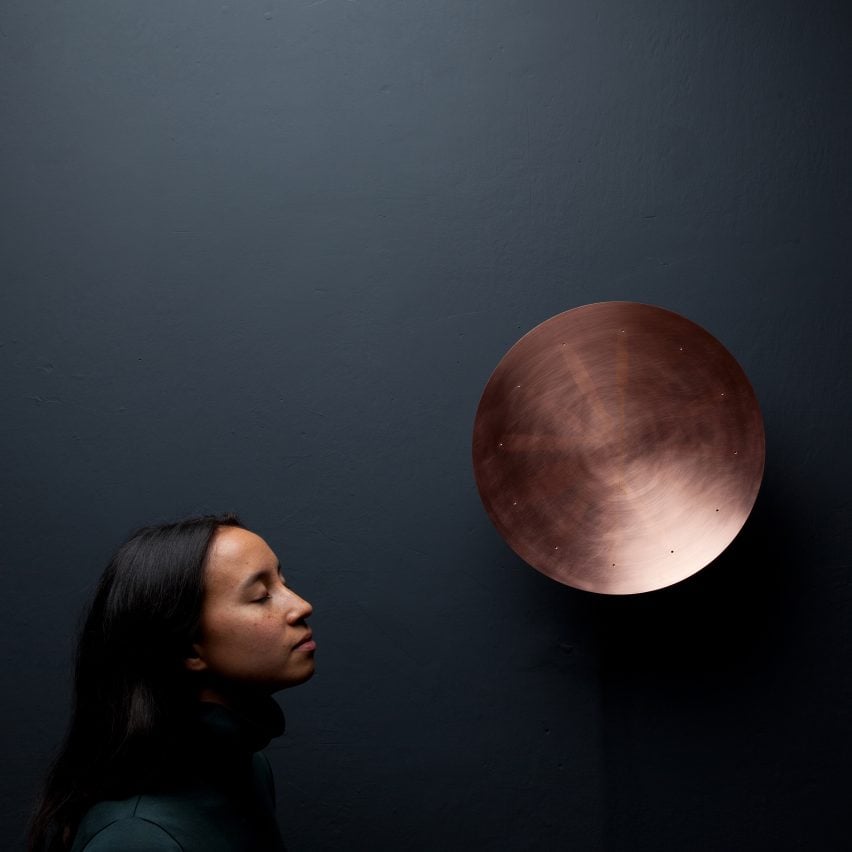
Es Liegt Was in Der Luft by Patrick Palcic
Perfume leaks at hourly intervals from holes punctured into the copper face of this clock, created by German designer Patrick Palcic to offer an alternative way to tell time.
"From the uppermost hole, at 12 o'clock, the first liquid flows over the copper plate and leaves a trace on the surface," the designer explained. "The shell heats up and the first essence floats in the air."
Find out more about Patrick Palcic's Es Liegt Was in Der Luft clock ›
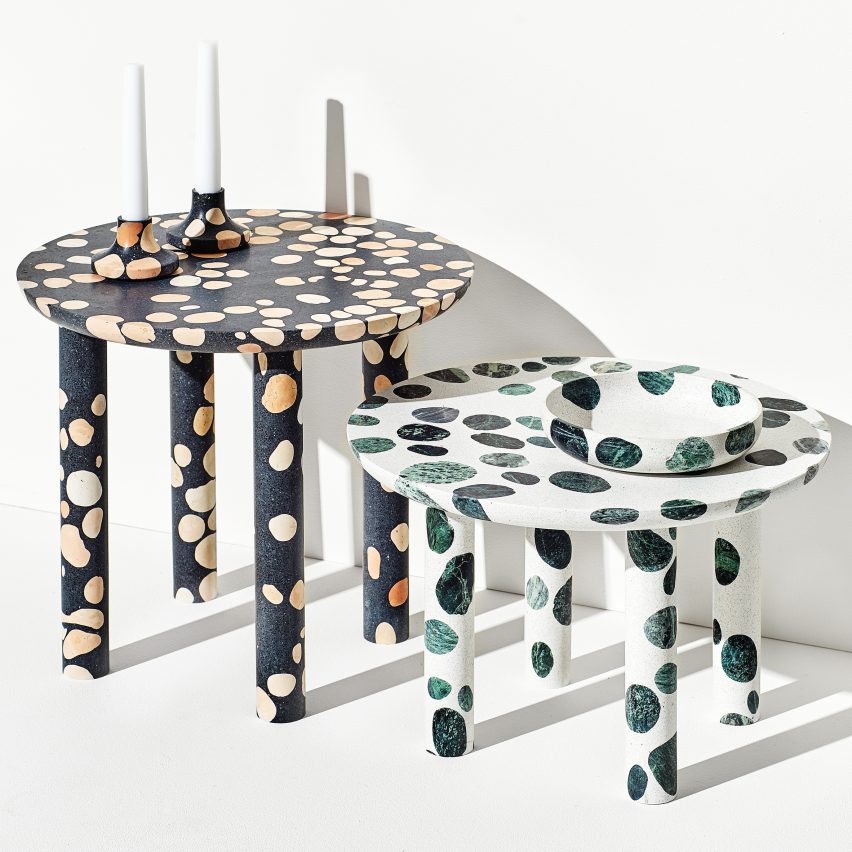
Candleholders, four bowls and two coffee tables make up by Italian designer Alberto Bellamoli's series of terrazzo homeware, patterned with large spots of leftover marble.
"I found the combination of terrazzo mixture and marble pebbles," he told Dezeen. "I cast a big block of terrazzo, and let it age for one month with the right conditions of humidity and temperature, almost like a handcrafted Italian salami."
Find out more about Alberto Bellamoli's Collecta homeware ›
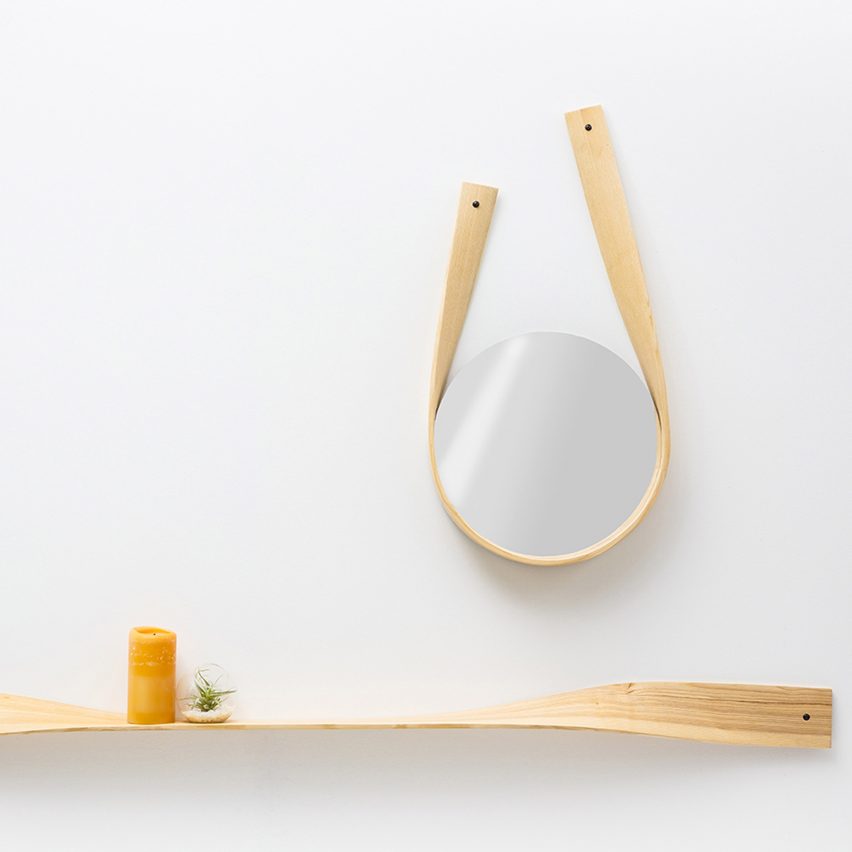
Steam bending furniture by Bar Gantz
Israeli design Bar Gantz adapted the traditional wood-working technique of steam bending to twist thin strips of wood, making a mirror frame and a shelf.
"Wood bending composes of mainly bending the wood, however, I found the twisting of the wood fascinating and implemented this into every product," said Gantz.
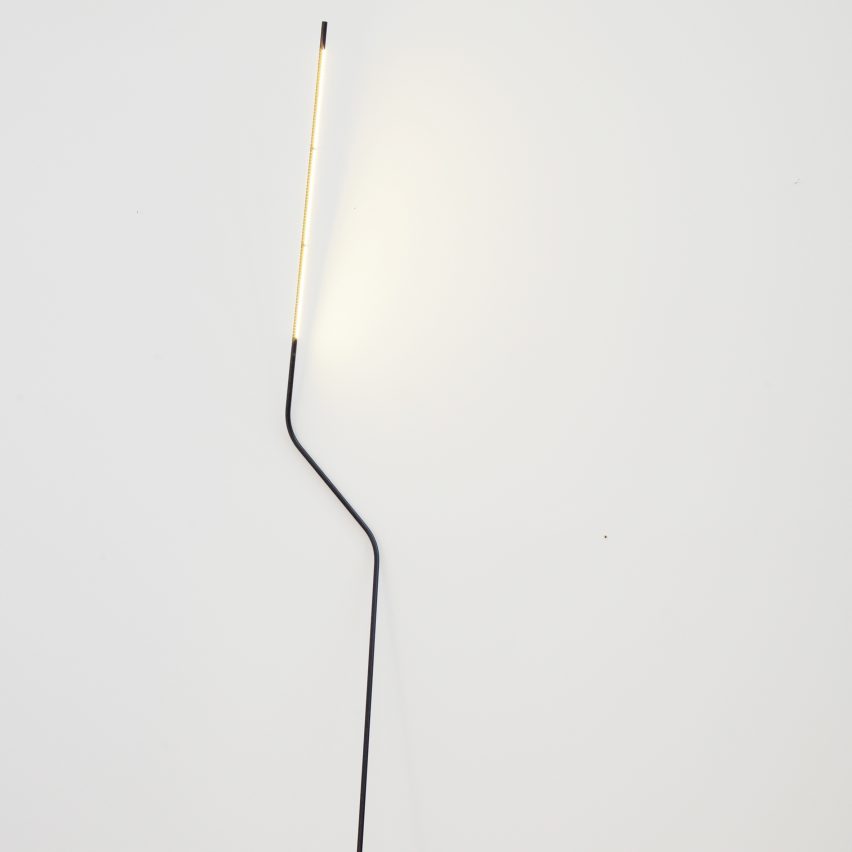
This ultra-minimal light by German designer Bernhard Osann is made out of a bent piece of rod so that it can lean against a wall and be rotated to create different illumination effects.
"I worked on a normal standing lamp and I had problems with the base and I got a bit angry and broke it," Osann told Dezeen. "Neo is a standing lamp without a base and without a lampshade."
Find out more about Bernhard Ossan's Neo light ›
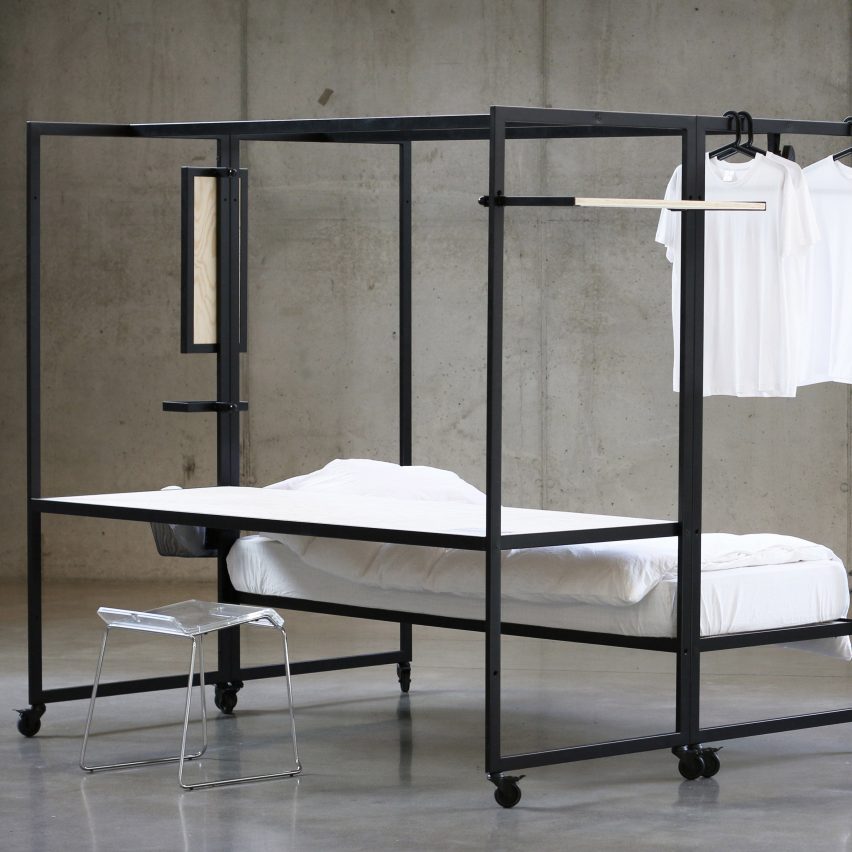
After struggling for space in his student apartment, Pieter Peulen, a Belgian designer, combined a bed, desk and wardrobe into one piece of furniture to maximise space.
"I was looking for the perfect solution for this housing problem," he told Dezeen. "You can put the whole construction together in a room or split the compartments and put one part on the left side of the room and the other part on the right side."
Find out more about Pieter Peulen's Flexit furniture ›
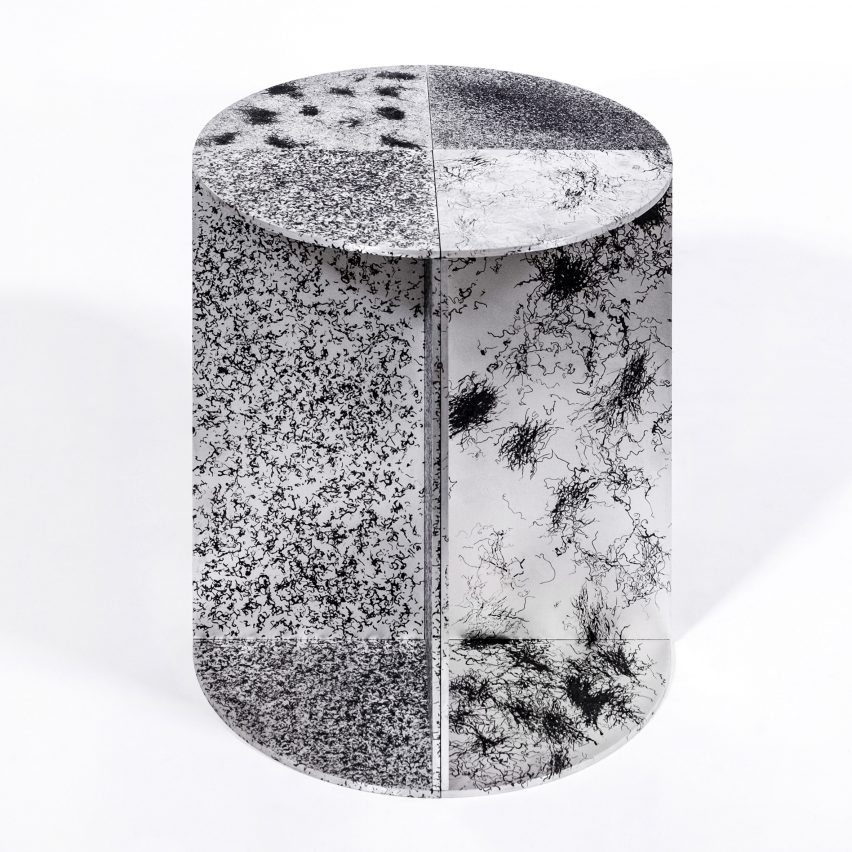
The Colour of Hair by Fabio Hendry and Martijn Rigters
Searching for a sustainable alternative to ink, London-based designers Fabio Hendry and Martijn Rigters burnt human hair to create etch-like patterns across aluminium stools.
"For us it was important that we have a constant material supply," Hendry told Dezeen. "There are plenty of hairdressers so the material supply is aways guaranteed."
Find out more about Fabio Hendry and Martijn Rigters' The Colour of Hair stools ›
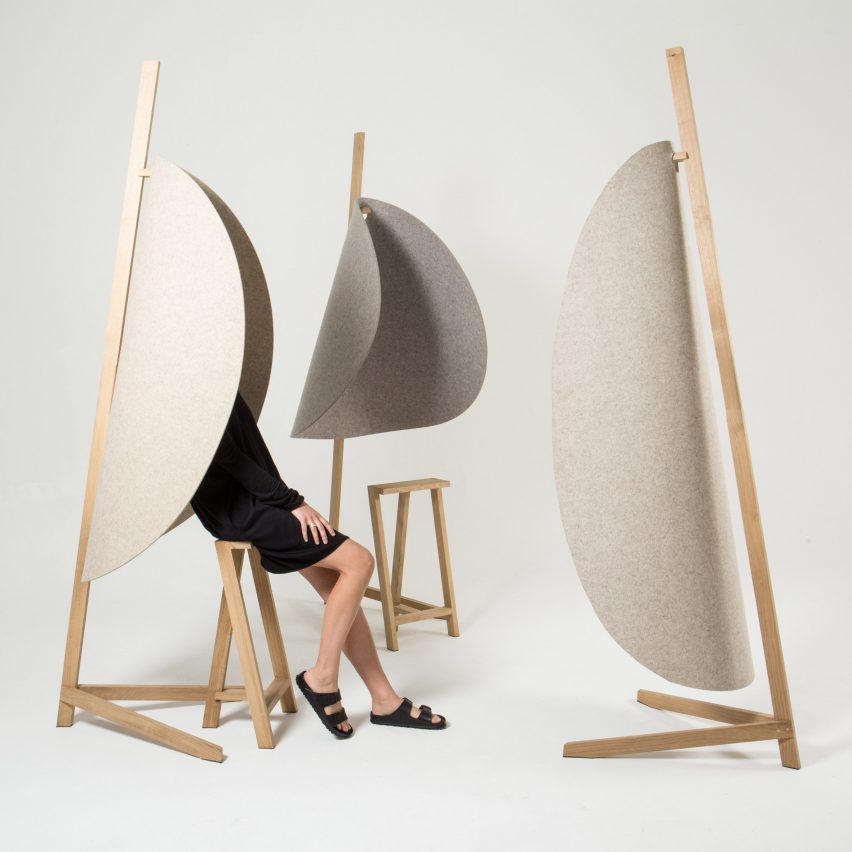
Nascondino by Pierre-Emmanuel Vandeputte
Belgian designer Pierre-Emmanuel Vandeputte used felt to create these alcoves that offer private seating areas – and opportunities for hide-and-seek – in contemporary open-plan spaces.
"Reminiscent of the youthful days of hide-and-seek, Nascondino creates a new space in which we can lose ourselves in reverie," he explained. "When we leave our feet poking out, it's usually because we want to be found."
Find out more about Pierre-Emmanuel Vandeputte's Nascondino chairs ›
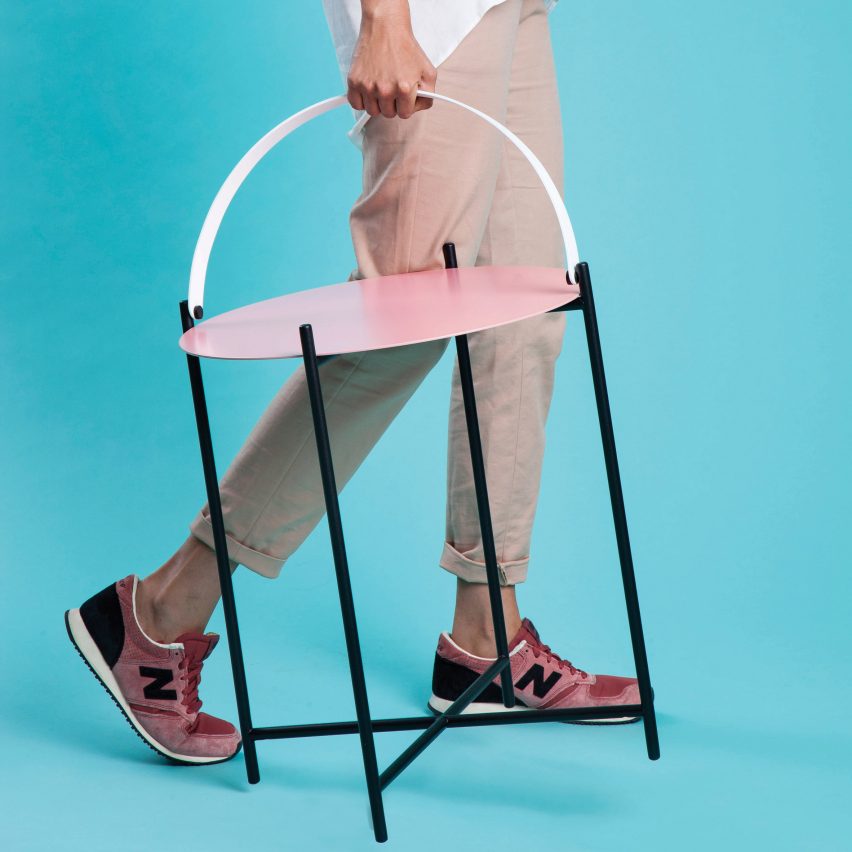
Edge Tables by Roee Magdassi
A handle on this coffee table by Roee Magdassi, an Israeli designer, features a handle that makes it easy to carry around. When not in use, the handle becomes a raised edge that ensures nothing slips off the tabletop.
"Edge is a set of two coffee tables, which can be used either outdoor or indoor," said Magdassi. "The tables are made of powder-coated steel and aluminium and feature a carrying handle, which has both visual and functional values."
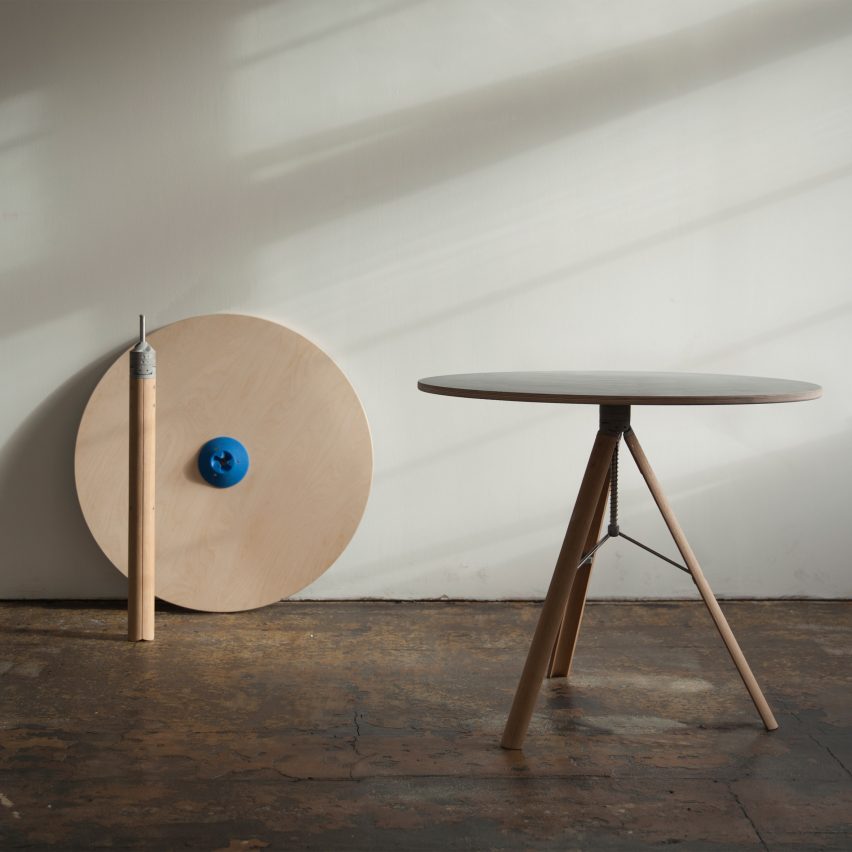
Major Tom by David Ciernicki
German designer David Ciernicki designed a rubber conical connection that makes assembling this modular table quick and easy. Its legs fold up into a cylinder when closed.
"The key component is a conical steep thread onto which module elements are screwed by a simple 90-degree rotation," Ciernicki explained. "With a click, an automatic mechanism secures this connection."
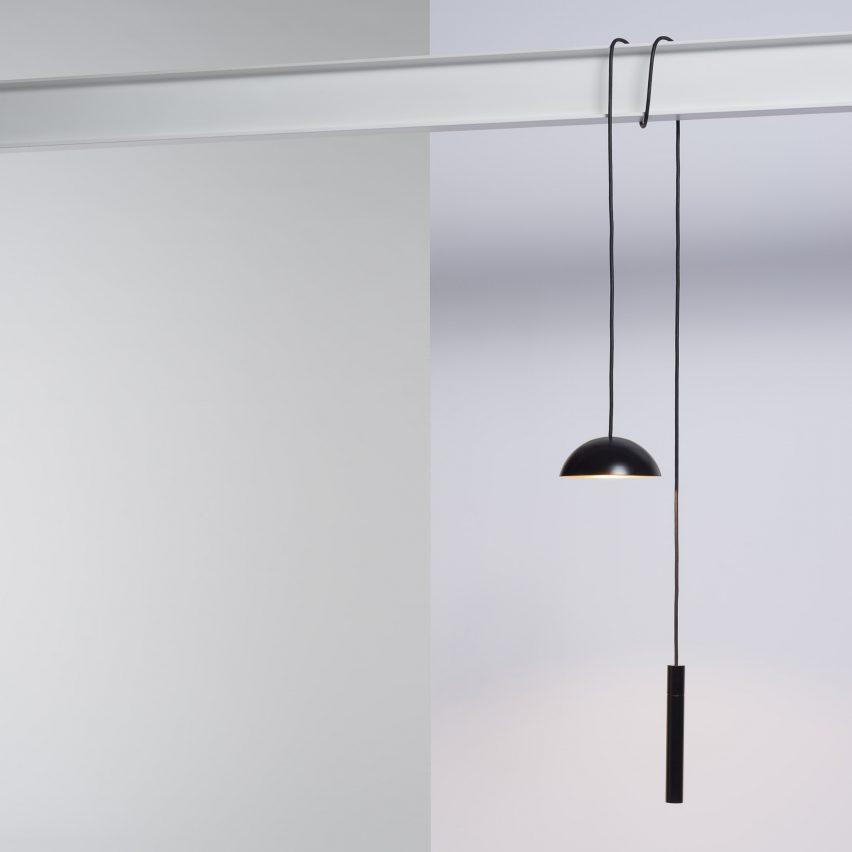
Pong by Simon Diener
Named Pong, Simon Diener's pendant light features a long cable with a heavy battery at the end that acts as the counterweight, so that it can be slung across furniture.
"The cable is not simply defined as a power line, instead it primarily serves a mechanical function, as a chord that allow the lamp to be loosely slung over banisters, suspended from beams or anywhere else," said the German designer.
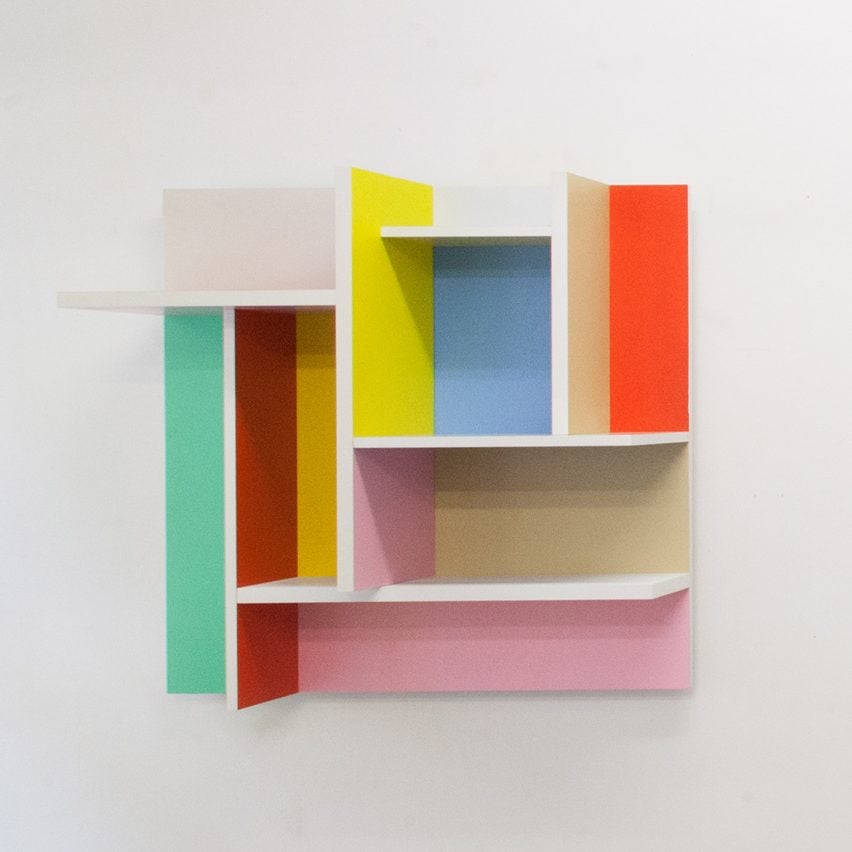
Pico Balla by Enzo Zak Lux
Aiming to create a "sculpture and a display unit", Enzo Zak Luk used MDF panels of different lengths and eight colours to make up the Pico Balla shelf, which can be rotated to offer different effects.
"The back wall consists of eight colour fields, on which surfaces of different heights are arranged in alignment with one another," explained the German designer. "Viewing the superimposed surfaces from different angles results in a fascinating game of constantly evolving compositions of colour and space."
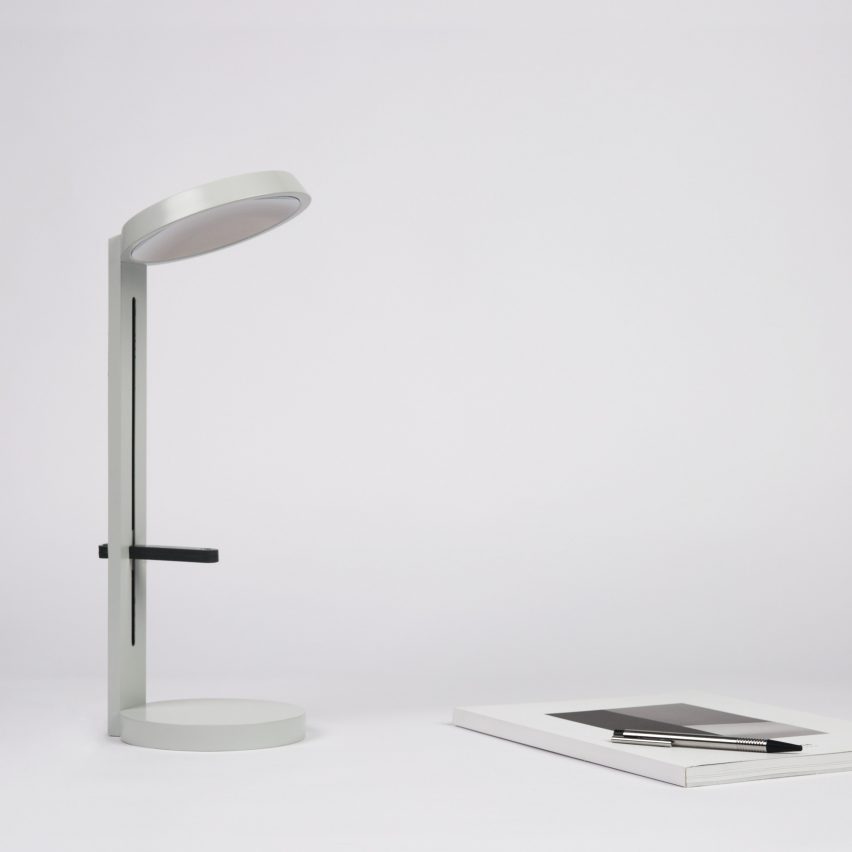
Focus by Susanne Tesche
A concave mirror is used to reflect the LED light that slides up and down the stand of Susanne Tesche's table lamp to create different types of illumination. It also turns on and off at either end.
"With the table lamp Focus, the user is invited to approach light in a playful manner," said the German designer. "Depending on the position of the illuminant, the light is either concentrated or scattered."